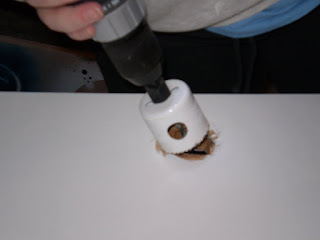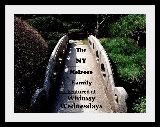In honor of the dip in temps in our neck of the woods, I thought that today would be all about gas. Not methane, though we have quite a bit of that thanks to Hubs. I am talking about natural gas, the kind we use to heat our house.
We have a multi-zone, natural gas fueled, hot water baseboard heating system with four thermostats. Zone One is the Family Room and Kitchen*, Zone Two is the Dining Room and Living Room*, Zone Three is the Office and Front Bedroom*, Zone Four is the Master Bedroom* and the Center Bedroom, Zone 5 is the bathrooms (this zone comes on whenever another zone kicks on). The * denotes which room the thermostat is located in.
It is quite nice because we are able to turn the heat up in only the areas where we are hanging out versus heating the entire house. The not nice part?
We had the old fashioned "lever style" thermostats. You know the kind I am taking about. The ones where you have to guestimate and eyeball what the current temp is and hope the temp you want is the temp you are setting it for. Personally I loath these types of thermostats.
After getting a wake up call in the form of our December natural gas bill (more than double November's), we realized that we needed to get a better handle on how we are heating the house. Solution: digital thermostats. Like these.
We went with the most basic model since we didn't need it to be programmable and we only have a 2-wire system. We got these at Home Depot for about $25.00 a unit.
Then it was a matter of switching them out. The switching out part was easy. Since we have a 2-wire system, we only had two connections to make. Here is a tip: Take a pencil and wrap the wire you removed from the old fixture around it. This will ensure that the wire won't fall back into the wall.
One hiccups we found was that some of the thermostats had an old-fashioned mercury switch. Needless to say once those were carefully removed, they got double bagged and placed in the basement waiting to be brought to our county's Public Works Department for proper disposal since placing liquid mercury in the regular trash is a big no no.
I swear this gizmo looks like a high school science project from the 50s.
It actually took more time to sand, spackle and paint the area that was previously covered by the old thermostats.

No these were not taken all in the same room. I realized that I hadn't taken photos of all the stages in any one room. Whoops. So you get to see the Benjamin Moore Riviera Azure from our front bedroom, the awful tan from our living room and Valspar Key Lime Pie from our kitchen.
Now all we need to do is wait to see if being able to set each zone to a definite temperature will result in lower bills or at least not the same shocking jump we saw in the last bill. Personally, I think it will be the latter since January is our coldest month here is Michigan.
Will keep you posted when we get out bill for the last week of December and the first three weeks of January.
Tip of the Project: After you disconnect the thermostat wires, wrap them around a pencil to ensure they don't fall back into the wall.






























































